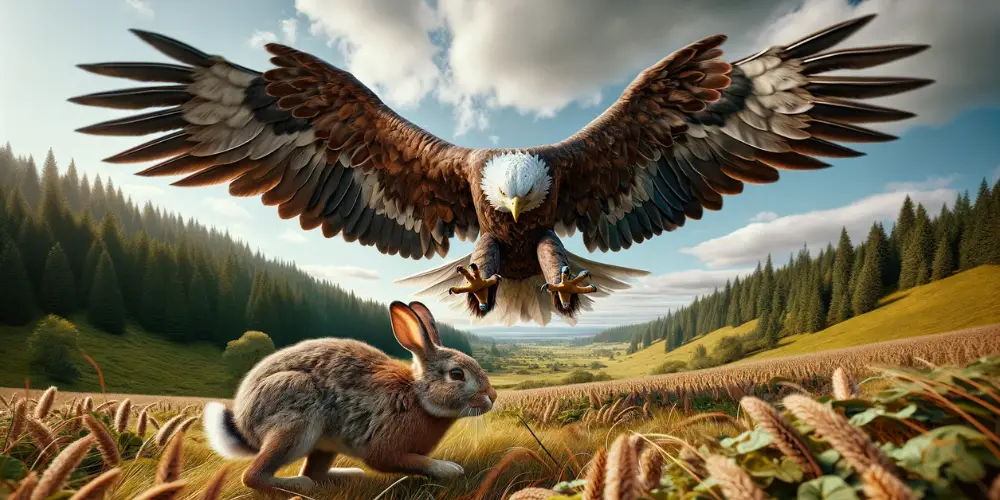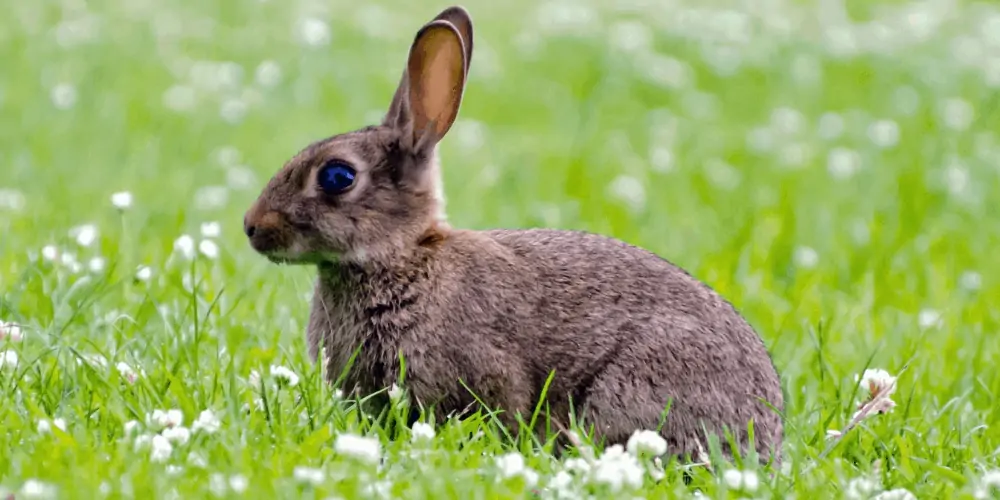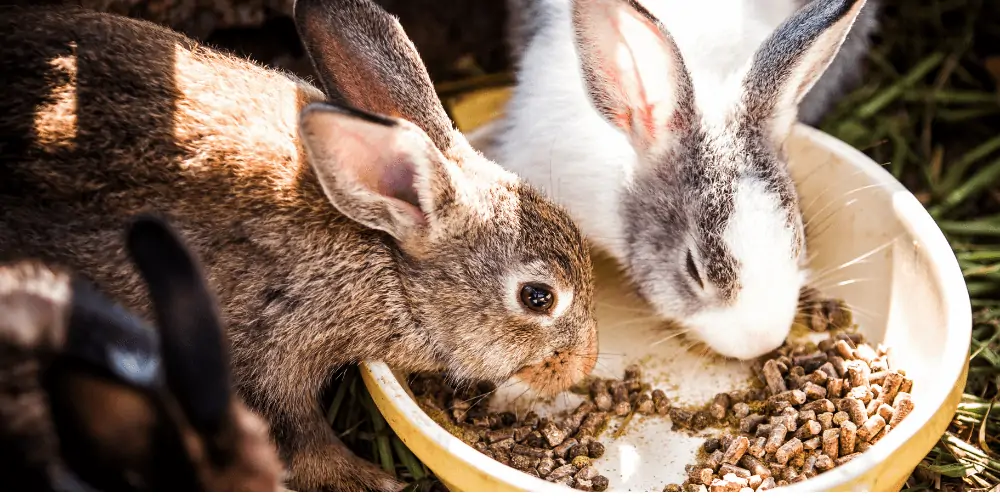Rabbits, with their fluffy tails and twitching noses, might be a symbol of cuteness and cuddles for many.
Yet, in the wild and some urban settings, they’re a key link in the food chain, serving as prey for various predators.
Understanding who these predators are is not just academic; it’s crucial for pet rabbit owners, wildlife enthusiasts, and even gardeners who wonder why the local rabbit population fluctuates.
1. Foxes
Foxes typically deliver a fatal bite to the rabbit’s neck or head and may use ambush tactics, leveraging their intelligence to trap rabbits.
Signs of fox predation include scattered fur and remains, as foxes may not consume the entire rabbit. They are known to stash excess kills for later consumption, which could be a clear indicator if multiple pets are missing or found deceased.
2. Coyotes
With their expanding territories, coyotes have become familiar figures in rural and urban settings, preying on rabbits with stalking and strategic pursuit.
Similar to foxes, coyotes may leave behind fur and parts of the rabbit not consumed. Look for tracks and droppings near the site, as coyotes often visit the same hunting grounds.
3. Domestic Dogs
Certain dog breeds retain their primal hunting instincts, posing significant risks to rabbits, particularly where domestic meets wild.
Dog attacks often result in more scattered and chaotic signs of predation, with evidence of struggle, such as disturbed ground and scattered fur.
4. Eagles
With its formidable talons and sharp eyesight, the Eagle exemplifies avian predation, plucking rabbits from the ground in a swift, decisive swoop.
Eagle predation can be identified by the presence of significant talon marks on the body, and sometimes, the rabbit may be carried away entirely with only fur or small remains left behind.
5. Hawks
Hawks utilize their keen vision to identify prey in open fields, executing high-speed dives to capture unsuspecting rabbits.
Look for signs similar to eagle predation, with talon marks being a clear indicator, along with feathers or bird droppings near the site of the attack.
6. Owls
Utilizing their silent flight and night vision, owls emerge as efficient predators under the cloak of darkness.
Owl predation is often harder to detect due to their silent hunting but look for puncture marks from talons, beaks, and regurgitated pellets containing fur and bones.
7. Snakes
In the Americas, large snakes like rattlesnakes occasionally target young or smaller rabbits, using surprise and constriction as weapons. Snake predation signs include bite marks and the snake’s presence if it’s still constricting or consuming the rabbit.
8. Cats
Both domestic and feral cats, driven by instinct, hunt and kill rabbits, often for sport rather than sustenance.
Cats often leave behind parts of their prey, playing with their catch before consuming it. Look for bite marks and scratches, along with scattered remains.
9. Mustelids (Stoats and Weasels)
Stoats and weasels, despite their size, stand as formidable adversaries, capable of infiltrating burrows to prey on vulnerable kits.
These predators often kill more than they can eat in one sitting, leaving behind partially consumed rabbits or storing them in their dens.
10. Bears
Bears, though omnivorous, will not hesitate to prey on rabbits when the opportunity presents itself, especially in regions where their habitats overlap.
Bear predation would be rarer and more opportunistic, but look for large bite marks, tracks, and disturbed surroundings indicating a large animal’s presence.
Protecting Domestic Rabbits from Predators
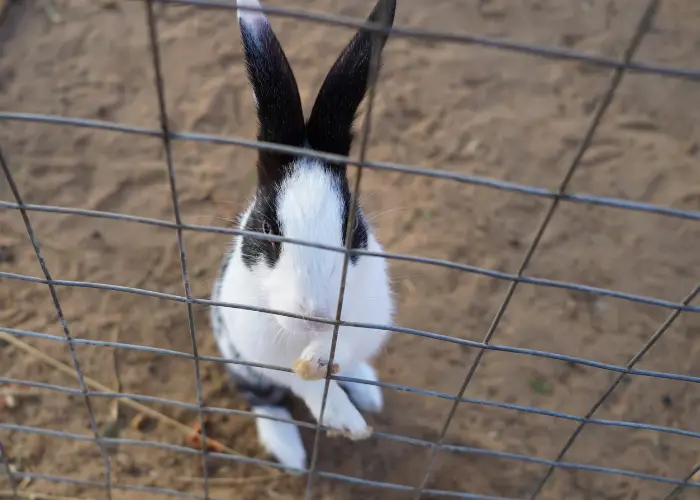
For pet rabbit owners, especially those who keep their rabbits outdoors, protecting them from natural predators is a priority. Ensuring the safety of domestic rabbits involves several strategies:
- Secure Housing: The primary defense against predators is a sturdy, secure hutch or enclosure. It should be made of solid materials that cannot be easily broken or chewed through, with a lockable door to prevent unauthorized access. The enclosure should have a solid floor or be raised off the ground to prevent predators from digging underneath.
- Predator-Proof Fencing: Surrounding the rabbit’s play area with predator-proof fencing is also crucial. The fence should be tall enough to deter jumping predators like foxes and have a fine mesh that smaller predators cannot squeeze through. Burying the bottom of the fence several inches into the ground can prevent digging predators from gaining access.
- Shelter and Hiding Spots: Rabbits need hiding places if they feel threatened. Providing plenty of shelter within their enclosure can give them a sense of security and a place to retreat if a predator is nearby.
- Supervised Outdoor Time: Allowing rabbits outdoor time is essential for their well-being, but it should be supervised to protect them from predators. A secure, enclosed run during the day can provide them with fresh air and exercise while keeping them safe.
- Predator Deterrents: Using deterrents such as motion-activated lights or sprinklers can discourage predators from entering your yard. Some pet owners also use predator decoys or ultrasonic deterrent devices, although their effectiveness can vary.
- Understanding Rabbit Behavior: Knowing how rabbits signal fear or distress can help owners preempt potential threats. Quick, sudden movements, thumping, or hiding are signs that a rabbit may sense a predator.
Implementing these measures can significantly reduce the risk to domestic rabbits from natural predators, providing them with a safe and comfortable living environment.
Role of Rabbit Predation in Ecosystem Balance
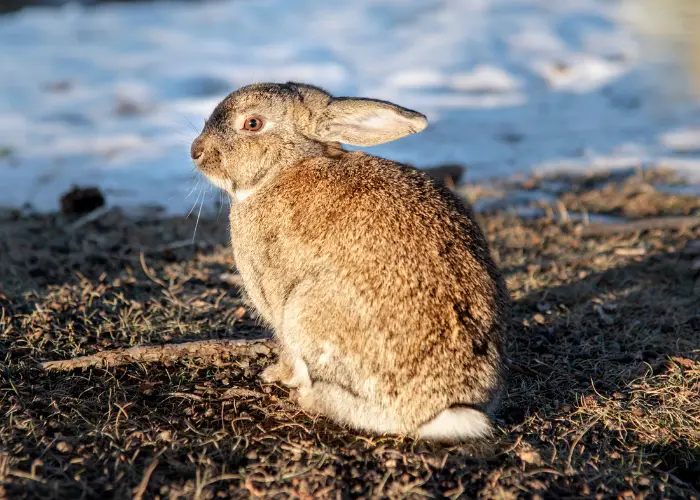
Predation on rabbits is crucial in sustaining ecological balance due to their high reproductive rates.
Without natural predators, rabbit populations can grow rapidly, leading to overgrazing.
This overgrazing can harm plant life, reduce biodiversity, and even lead to soil erosion, affecting other species and the ecosystem’s overall health.
On the flip side, predators like foxes, eagles, and mustelids help keep rabbit numbers in check.
This natural control mechanism ensures that vegetation can regenerate and that various plant and animal species can thrive.
The interplay between rabbits and their predators is a classic example of nature’s checks and balances, highlighting the interconnectedness of all living things within an ecosystem.
The Food Chain: Rabbits as a Keystone Species
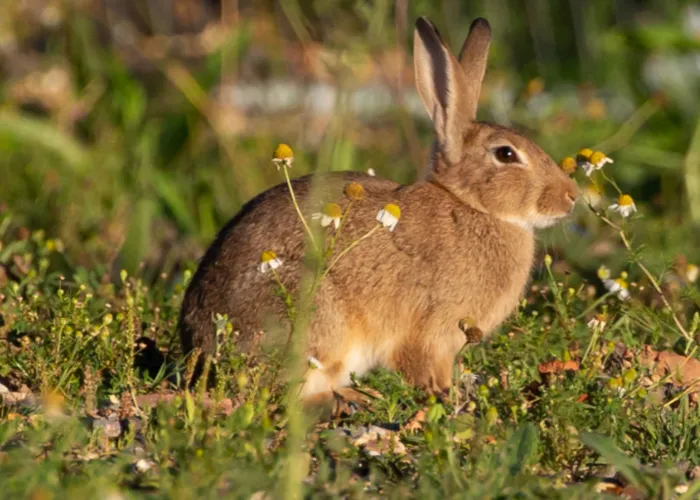
Rabbits are pivotal in their ecosystems, acting as keystone species that influence the survival and behavior of various predators.
Their abundance or scarcity can directly impact the population dynamics of carnivores and birds of prey, demonstrating the intricate connections within food webs.
The effect of rabbit populations extends beyond predators, impacting plant communities and overall biodiversity.
A surge in rabbit numbers can lead to overgrazing, affecting plant species’ regeneration and other wildlife’s habitats.
Conversely, a decline in rabbits can lead to increased vegetation and reduced food sources for their predators, showcasing the delicate balance within ecosystems.
Understanding the role of rabbits in the food chain highlights the importance of maintaining ecological balance.
It underscores how changes in a single species’ population can have wide-reaching effects, emphasizing the need for conservation efforts to protect natural habitats and the intricate web of life they support.
Human Impact on Predator-Prey Dynamics
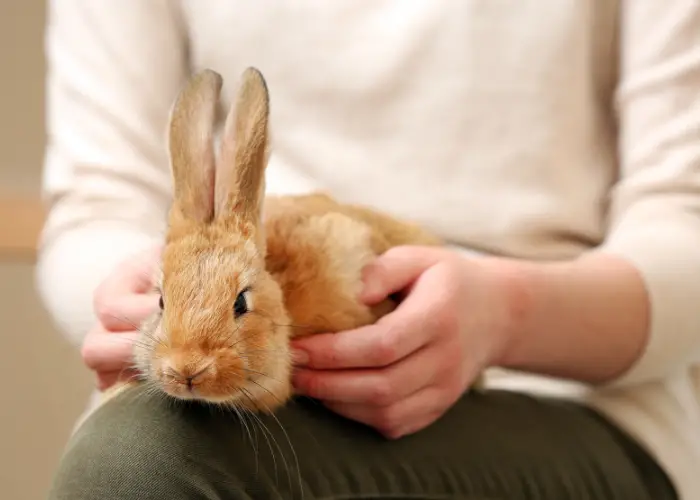
Human activities, like urban expansion and recreation, can disrupt the natural predator-prey dynamics, often leading to decreased predation risks for some species.
For instance, large carnivores tend to avoid areas with high human presence, which could inadvertently create safe zones for prey species less sensitive to human disturbance.
Research using camera traps along trails and roads has shown that predators avoid these areas.
However, prey species benefit from this reduced predator presence and can find additional food resources due to human activities, especially in agricultural landscapes.
This human-induced alteration in wildlife behavior underscores the need for conservation strategies that consider the indirect effects of our presence on ecosystems.
Balancing human activities with wildlife conservation requires understanding these complex interactions and mitigating adverse impacts on natural predator-prey relationships.
Conservation Efforts and Predator Rehabilitation Programs
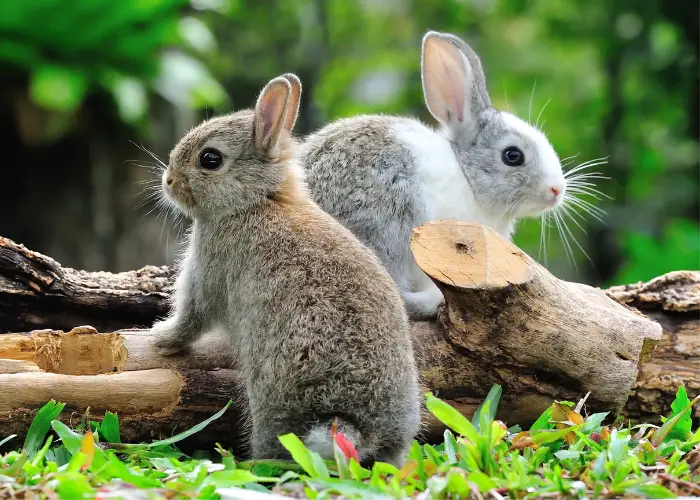
Conservation efforts have successfully stabilized swift fox populations across the Great Plains by protecting habitats and reintroducing the species, avoiding the need for Endangered Species Act listing.
Similarly, collaborative efforts for the Pacific fisher in northern California and southern Oregon have prevented its listing under the Endangered Species Act, with over two million acres of private land in Oregon helping to protect the species.
Moreover, the Endangered Species Act has led to significant recoveries for species like the bald eagle, Florida panther, and gray wolf through various conservation strategies, including habitat protection and public education.
These successes highlight the impact of concerted conservation efforts and the importance of predator rehabilitation programs in maintaining ecosystem health.
Impact of Predator Behaviors on Rabbit Populations Studies

- The study established the decline in mammalian predators (cats and ferrets) following decreases in rabbit density, indicating a numerical response of predators to the abundance of rabbit prey. However, the authors were cautious about estimating the magnitude of this numerical response due to methodological limitations.
- Predation by feral cats, foxes, dingoes, and other avian species can account for substantial losses of healthy and starving rabbits, highlighting the significant impact of predators on rabbit populations.
Conclusion
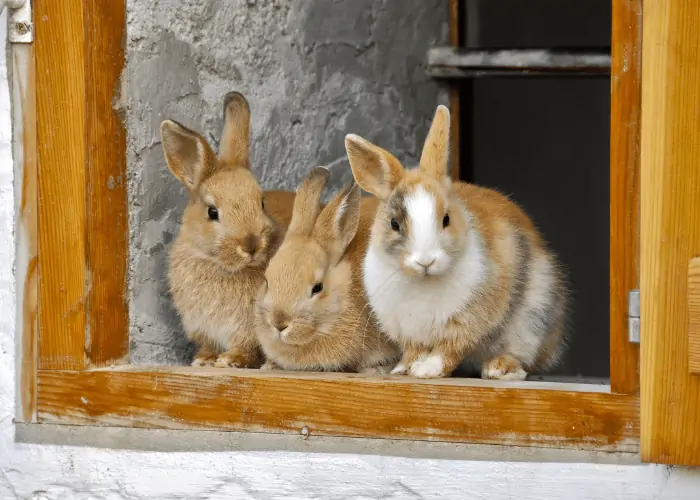
In the grand tapestry of nature, rabbits play a critical role as prey, supporting a diverse array of predators that range from the silent, nocturnal owl to the cunning and adaptable fox.
This intricate predator-prey relationship highlights the adaptability and resilience of these creatures.
It underscores the delicate balance within ecosystems where each species, predator or prey, contributes to the health and stability of their environment.
For pet rabbit owners, understanding these natural dynamics is essential for safeguarding their beloved pets against potential threats.
By recognizing the wide range of predators and their hunting tactics, owners can take proactive measures to protect their rabbits, ensuring they remain safe whether they’re housed outdoors or allowed to roam in enclosed spaces.
Moreover, for wildlife enthusiasts and conservationists, studying rabbit predators offers valuable insights into the importance of preserving natural habitats and the interconnectedness of species.
It serves as a reminder that conservation efforts must consider the well-being of both prey and predator to maintain ecological balance.
While rabbits may be at the lower end of the food chain, their role in the ecosystem is minor.
They are a vital link in the natural world, influencing the survival and behavior of various predators.
By appreciating and understanding these dynamics, we can foster a deeper respect for nature’s complexity and work towards a more harmonious coexistence with all its inhabitants.

